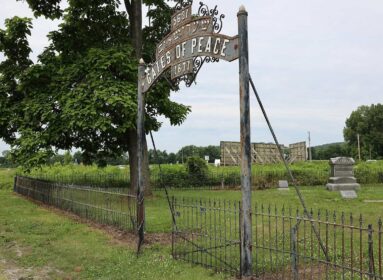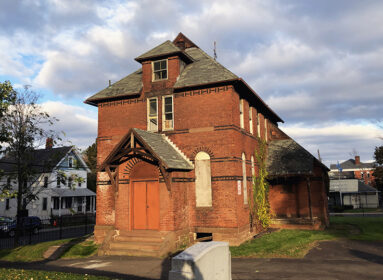By Cindy Mindell
 Nearly 70 years after the liberation of Auschwitz, stories about the Holocaust continue to emerge and enlighten. In his newly published novel, author AJ Sidransky explores a little-known safe haven for Jews fleeing the Nazis – the settlement of Sosúa in the Dominican Republic, where some 850 European Jews found a temporary home from 1940.
Nearly 70 years after the liberation of Auschwitz, stories about the Holocaust continue to emerge and enlighten. In his newly published novel, author AJ Sidransky explores a little-known safe haven for Jews fleeing the Nazis – the settlement of Sosúa in the Dominican Republic, where some 850 European Jews found a temporary home from 1940.
The book is a collage of Sidransky’s own life and family history. The former Trumbull resident will return to Connecticut on Saturday, July 13 to discuss his book in New Haven.
Sidransky moved with his parents to Trumbull in 1970 when he was 14. The family joined Congregation B’nai Torah, where his father, Lawrence, founded the men’s club. Sidransky was involved in BBYO and served on the regional board for three years while a student at Trumbull High School. As a teen, he was deeply involved in the fight to free Soviet Jews. After graduating with a degree in urban planning from UConn in 1978, Sidransky moved back to Manhattan, working as a writer. His mother, Harriet, now lives at Tower One Tower East in New Haven, where Sidransky will discuss the little-known story behind his novel.
The settlement of Sosúa was born out of the Evian Conference, which convened in 1938 to discuss possible ways to deal with the increasing numbers of Jewish refugees fleeing Nazi persecution. Dominican dictator Raphael Trujillo agreed to contribute a former banana plantation to house fewer than 1,000 Jews from Germany, Austria, Czechoslovakia, Hungary, and Poland. Trujillo’s intentions were far from altruistic: he hoped to both make amends for the recent massacre of 20,000 Haitians and lighten the complexion of the Dominican people through intermarriage with European Jews. Even so, unlike the other attendees at the Evian Conference, his actions actually saved lives.
Among the settlers in Sosúa were AJ Sidransky’s great-uncle and great-aunt, Max and Helen Grunfeld. They ran a hotel in the Csetnek, a large town in what was then Czechoslovakia, along with Max’s younger brother, Lajos, and sister, Mariam.
One night in 1939, before the start of the war, Max’s gentile employee and friend came to his house to tell him that the local fascists were going to arrest him in the morning. Max and Lajos fled with their wives to Hungary that night. They made their way first to Trieste, where they learned that the visas they held for Palestine were forgeries. They proceeded to Genoa and stayed until June 1940, when Max was interred in an Italian concentration camp in Compagna as an enemy alien. Helen went into hiding, and Lajos and his wife returned to Slovakia.
DORSA, the Dominican Republic Settlement Association, visited the camp that summer to recruit for the Jewish settlement in Sosúa. The Grunfelds volunteered to go and lived there until 1946, when AJ’s grandfather was able to sponsor them in New York.
“Sosúa was one of the best-kept secrets of the Holocaust,” says Sidransky. “When I mention this chapter of history to people – Jewish, American, and even Dominican – they don’t know anything about it.”
Sidransky was inspired to write Forgiving Maximo Rothman as a way to share the story of Sosúa, “and to show the world what a little bit of kindness can result in,” he says. “Life was hard for the settlers. The local Dominicans reached out to them and helped them adjust to the harsh new conditions. With their help, the settlers of Sosúa thrived.”
Since 2003, Sidransky has lived in Washington Heights, once home to a large Jewish community, most of them German-Jewish refugees who fled the Nazis in the ‘30s. By the ‘90s, the neighborhood had become primarily Dominican, mixed with an influx of Soviet Jews. “When I moved to the community, Washington Heights was ‘Sosúa North,’” Sidransky says. “I have befriended many Dominican people. Because of what their nation did for the uncle I loved, I started out with a big place in my heart for the Dominican people.”
Sidransky also used the plot of his book to highlight the work of the Soviet Jewry movement. “For American Jews of my generation, this became an opportunity to react differently than their parents and grandparents did during the Holocaust,” he says. “Unfortunately, both the plight of Soviet Jews and the success of the movement are receding in our collective memory. I hope my novel, in some small way, helps to remedy that.”
Comments? email cindym@jewishledger.com.








 Southern New England Jewish Ledger
Southern New England Jewish Ledger









